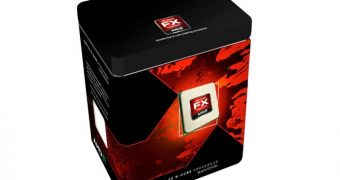The Bulldozer 8-core central processing units that Advanced Micro Devices launched a while ago may finally start to work as well as they were supposed to thanks to a new Windows update from Microsoft.
Microsoft announced an operating system software update for the Windows 7 and Windows Server 2008 R2 operating systems.
The package is supposed to enable the processors to “operate at the expected performance level.”
Previously, Windows did not support the new feature introduced by AMD with the Bulldozer, the Simultaneous Multithreading (SMT) scheduling.
It is support for this asset that Microsoft has now enabled under the aforementioned operating systems.
Only some programs actually support execution of multiple threads at the same time, though, so the prowess increase won't always apply.
Thus, data processing, simulations and rendering applications should see an improvement in operation, while other, regular and productivity programs probably won't.
Unfortunately, Microsoft was not explicit about just how much better Bulldozer machines are supposed to run now.
We'll have to wait for some performance benchmarks to appear if the answer to this dilemma is to become clear.
At least this news is more or less good for AMD's 8-core processors, after a time when there wasn't much to rejoice over.
In fact, not too long ago, AMD realized that the number of transistors it provided months ago, to every reviewer, was 800 million too high than it should have been.
It turns out that there are only 1.2 billion transistors instead of 2 billion, so the underwhelming performance is a bit easier to swallow, if anything.
Then again, even the new number is higher than mostly anything people would expect to find in a chip, so there still isn't a strong justification for how weak the 8-core proved to be in benchmarks.
Hopefully, whatever new benchmarks show up after this hotfix spreads around will be more encouraging.
UPDATE (December 16, 2011): The update seems to have disappeared within less than half a day.

 14 DAY TRIAL //
14 DAY TRIAL //